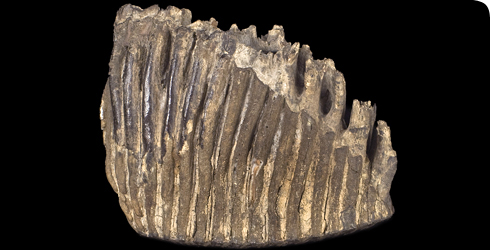Elephas (Palaeoloxodon) antiquus
Elephas (Palaeoloxodon) antiquus the straight-tusked elephant was a notably large-bodied elephant, with long, almost straight, tusks.
The straight-tusked elephant was a commonly found across Eurasia in the Middle and Late Pleistocene between 50 and 780 thousand years ago.
Well preserved fossils of straight-tusked elephants are know from Britain right across Europe and Asia as far as Japan.
The elephants were also environmentally significant as major tree-eaters. The elephants could heavily modify and open up woodland environments so that animals better adapted to more open conditions could move in
The straight-tusked elephants seem to have become extinct when their range was greatly restricted during the last major global ice age.
Species detail
-
Taxonomy
Elephas (Palaeoloxodon) antiquus was a notably large-bodied elephant, with long, almost straight, tusks. The straight tusk elephant was first defined from remains found in caves on the Gower Peninsula in south Wales. Find out more.
-
Distribution and habitat
Elephas (Palaeoloxodon) antiquus was at times common across Eurasia. Well preserved fossils of straight-tusked elephants are know from Britain across Europe and Asia as far as Japan. Find out more about the habitats and distribution of this ancient elephant.
-
Behaviour
Straight-tusked elephant consumed large areas of interglacial woodland vegetation and were major tree-eaters modifying their environment. Learn more about the behaviour of the straight-tusked elephant.
-
Dwarf elephants
In some areas, this species seems to have developed into numerous dwarfed populations.
